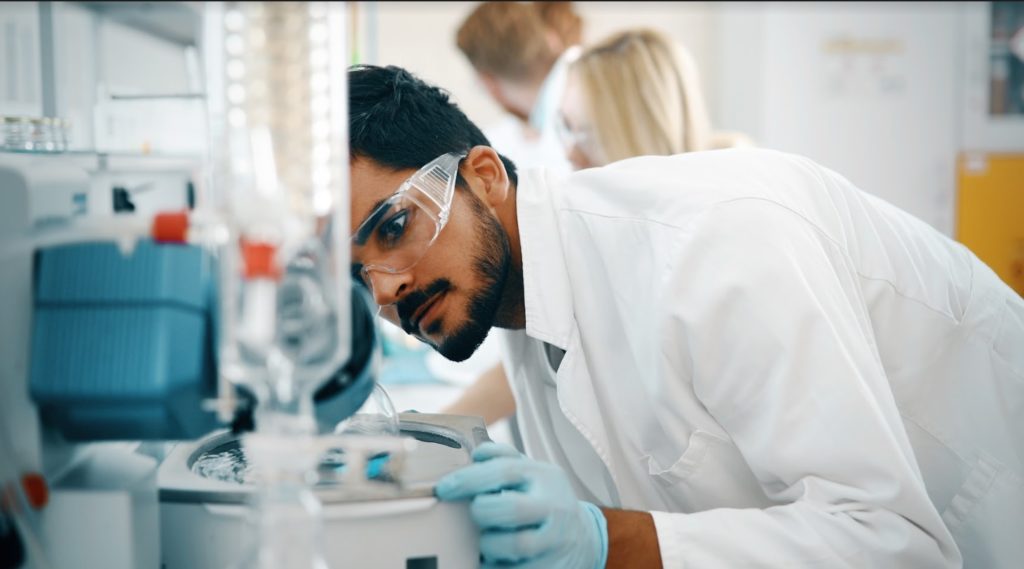Cleanroom technology, with its stringent standards for maintaining impeccable sterility, has become a foundation of modern scientific research across various disciplines. These controlled environments offer an environment of utmost cleanliness, free from contaminants that could compromise experiments or production processes.
As per a Cleanroom Technology post, cleanrooms in the USA are categorized based on the Federal Standard 209 (FS 209). This standard, introduced in 1963 by the Institute of Environmental Sciences and Technology (IEST), includes multiple classifications ranging from FS 209A to FS 209E. Notably, FS 209E defines the permissible maximum particle count for a cleanroom.
As technology continues to advance, cleanrooms play an increasingly vital role in fueling groundbreaking discoveries in fields such as pharmaceuticals, microelectronics, biotechnology, and aerospace. In this article, we explore how cleanroom technology’s commitment to sterility fosters scientific advancements that have the potential to transform our world.
Precision Manufacturing: HEPA and ULPA Filters
One of the most prominent areas where cleanroom technology excels is in precision manufacturing, especially in nanotechnology. The size of nanoparticles and nanomaterials often renders them highly susceptible to external influences.
Any contamination, even at the tiniest scale, could significantly alter their properties and compromise the final product’s performance. Cleanrooms maintain controlled environments with advanced air filtration systems to prevent the intrusion of airborne particles and ensure optimal conditions for manufacturing at the nanoscale.
According to American Cleanroom Systems, High-Efficiency Particulate Air (HEPA) and Ultra-Low Penetration Air (ULPA) filters are central to the cleanroom’s ventilation system. These highly sophisticated filters are critical components in maintaining the sterility of the environment.
HEPA filters are capable of removing at least 99.97% of particles as small as 0.3 micrometers in diameter, while ULPA filters take filtration to an even higher level, capturing particles as small as 0.12 micrometers with an efficiency of 99.9999%.
Advancements in Biomedical Research
Cleanroom technology has revolutionized biomedical research by providing the ideal environment to conduct cell cultures, gene therapies, and tissue engineering. Cells are incredibly sensitive to environmental changes, and contamination can lead to erroneous results or damaged samples.
With cleanrooms, scientists can work in an environment with low levels of airborne particulates and microbial contaminants, minimizing the risk of cross-contamination and maintaining cell cultures’ integrity. Additionally, the sterile conditions enable the safe handling of genetically modified organisms and viruses for cutting-edge research in virology and gene editing technologies like CRISPR.
Pioneering Pharmaceutical Innovations
The pharmaceutical industry heavily relies on cleanroom technology to develop and manufacture life-saving medications. As indicated in a Transparency Market Research report, the growing demand for cleanroom technology in drug manufacturing applications is a significant driver for the cleanroom technology sector.

From research and development to drug production and packaging, cleanrooms play a crucial role at every stage. Strict adherence to sterile conditions ensures the safety, efficacy, and quality of pharmaceutical products.
Cleanrooms prevent external contaminants from interfering with drug formulations, safeguarding patients from potential adverse reactions. Furthermore, the controlled environments help pharmaceutical companies meet the stringent regulatory requirements set by health authorities, accelerating the approval process for new medications and therapies.
A Gateway to Aerospace Exploration
In the aerospace industry, cleanrooms provide the necessary conditions for assembling and testing spacecraft components, satellites, and instruments. The sensitivity of aerospace equipment demands a contamination-free setting, as even a small speck of dust could jeopardize sensitive sensors or instruments.
By maintaining impeccable sterility, cleanrooms enable space agencies and private aerospace companies to ensure the success of their missions, whether exploring distant planets or conducting critical experiments in microgravity. These controlled environments have been instrumental in historic space missions, including moon landings, Mars explorations, and the study of comets and asteroids.
Microelectronics and Semiconductor Breakthroughs
The microelectronics industry owes much of its success to cleanroom technology. The manufacturing of microchips and semiconductor components requires an environment free from dust, debris, and other impurities.
According to a publication by Meticulous Research, the cleanroom technology sector is experiencing its most substantial growth in the semiconductor and electronics industry. This can be attributed to the escalating need for dependable and cutting-edge electronic components, rising market demand for memory and storage devices, and the intricacies involved in semiconductor manufacturing.
Cleanrooms with their controlled temperature, humidity, and particulate levels enable manufacturers to produce high-performance microelectronic devices with incredible precision. This has led to the exponential growth of computing power, making possible technological marvels like smartphones, supercomputers, and artificial intelligence.
Environmental Monitoring and Sustainability Efforts
Beyond its direct contributions to scientific discoveries, cleanroom technology has also played a crucial role in environmental monitoring and sustainability efforts. Cleanrooms are used to test air and water quality, analyze pollutants, and study climate change impacts.
The data collected from these controlled environments contribute to our understanding of environmental challenges and inform policies for a greener future. Furthermore, cleanroom practices, such as energy-efficient air filtration and waste management, have inspired sustainable initiatives in other industries, reducing the overall environmental footprint of human activities.
Key Takeaways
Cleanroom technology stands as a foundational pillar in modern scientific research, fueling significant advancements in diverse fields. Its commitment to impeccable sterility ensures the precision manufacturing of nanotechnology products and the integrity of biomedical research, ultimately leading to pioneering pharmaceutical innovations.
In aerospace exploration, cleanrooms play a crucial role in ensuring mission success through contamination-free assembly. Furthermore, the microelectronics industry owes much of its success to cleanroom environments, driving remarkable technological breakthroughs.
Beyond scientific progress, cleanroom technology’s impact extends to environmental monitoring and sustainability efforts. As a result, cleanrooms have become instrumental in shaping a future marked by transformative scientific discoveries and environmentally conscious practices.
